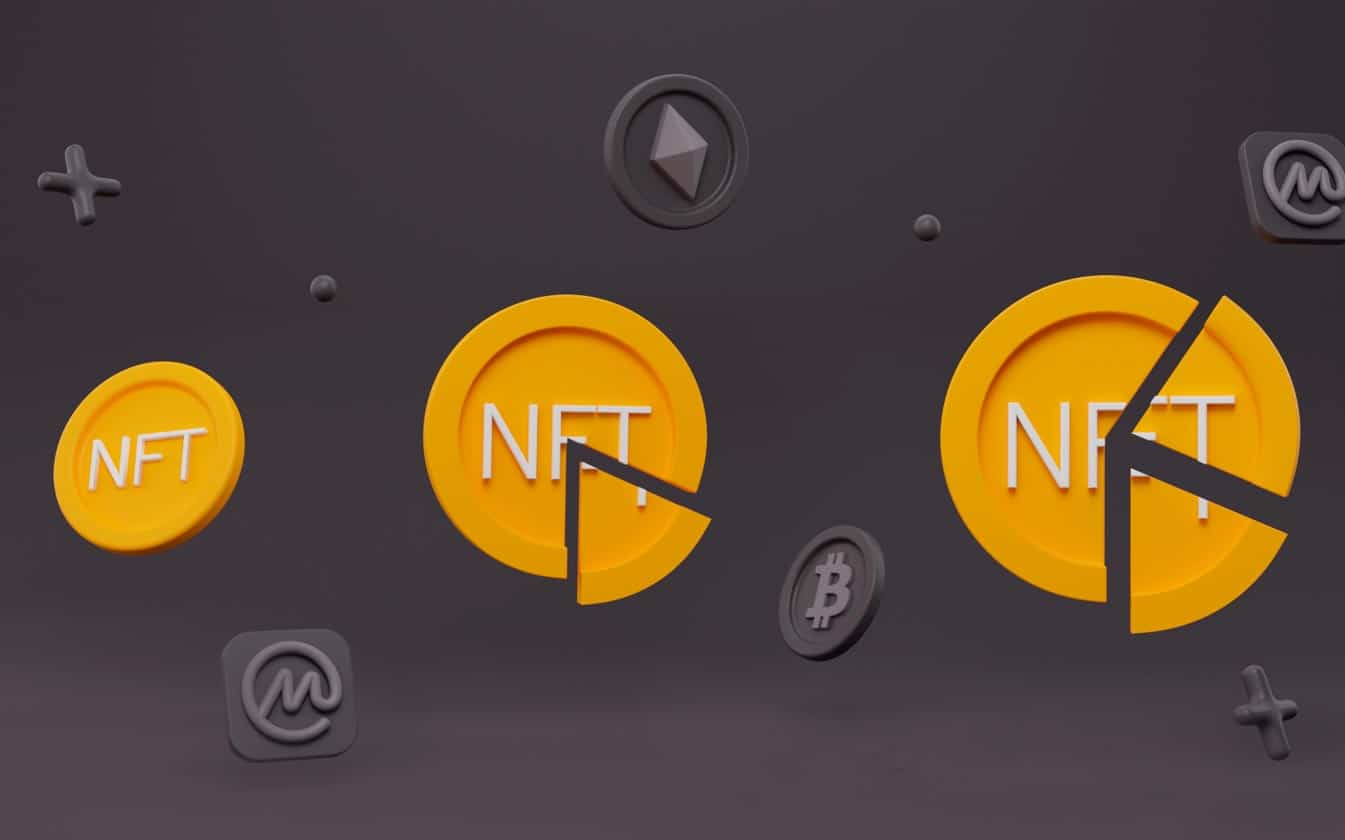Table of Contents
Toggle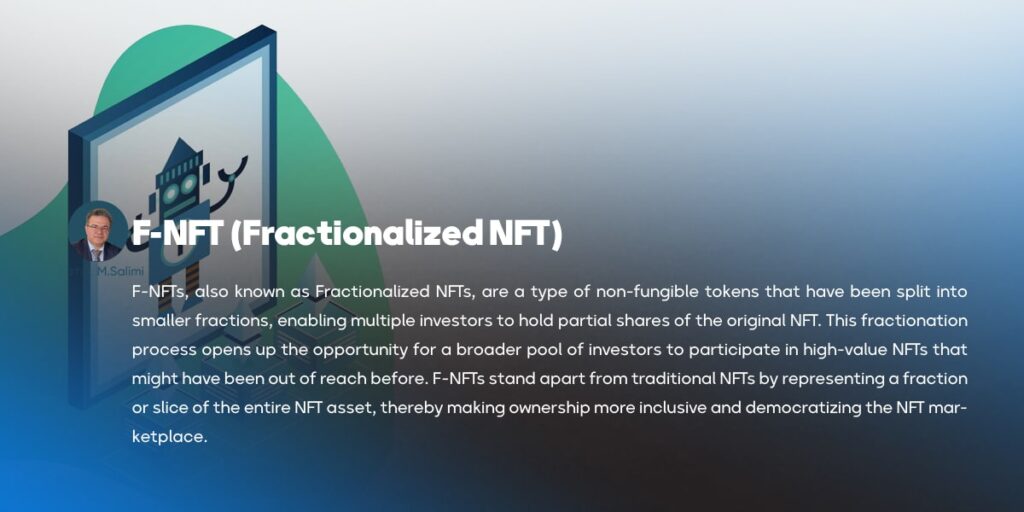
F-NFTs, also known as Fractionalized NFTs, are a type of non-fungible tokens that have been split into smaller fractions, enabling multiple investors to hold partial shares of the original NFT. This fractionation process opens up the opportunity for a broader pool of investors to participate in high-value NFTs that might have been out of reach before. Fractionalized NFTs stand apart from traditional NFTs by representing a fraction or slice of the entire NFT asset, thereby making ownership more inclusive and democratizing the NFT marketplace.
Additionally, F-NFTs (Fractionalized NFT) can be purchased, sold, and exchanged on secondary markets, offering liquidity and adaptability to investors. The fractionalization of an NFT can also be undone through a buyout option, allowing an investor to acquire all fractions and regain access to the original NFT. In essence, F-NFTs provide a pathway for smaller investors to engage in the NFT market and claim a piece of valuable digital assets.
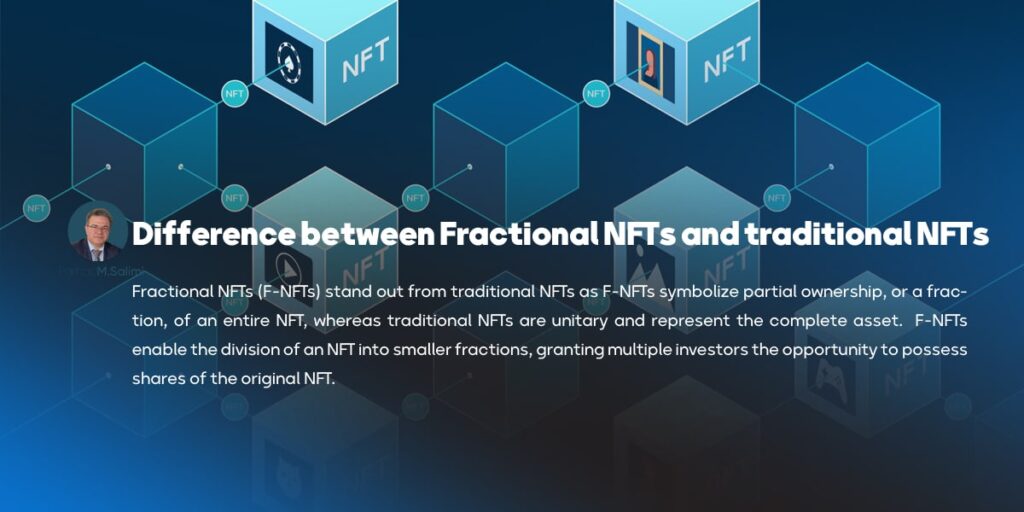
Difference between Fractional NFTs and traditional NFTs
Fractional NFTs (F-NFTs) stand out from traditional NFTs as F-NFTs symbolize partial ownership, or a fraction, of an entire NFT, whereas traditional NFTs are unitary and represent the complete asset. Fractionalized NFTs enable the division of an NFT into smaller fractions, granting multiple investors the opportunity to possess shares of the original NFT.
This fragmentation process enhances accessibility to ownership and allows for trading on secondary markets, delivering liquidity and flexibility to investors. In contrast, traditional NFTs are typically traded as a whole in singular transactions. Additionally, F-NFTs (Fractionalized NFT) present a buyout option facilitated by smart contracts, enabling an investor to obtain all fractions and unlock the original NFT. This distinction between F-NFTs and traditional NFTs underscores the democratization and inclusivity that fractionalization introduces to the NFT market.

Difference between Fractional NFTs and traditional NFTs
Fractional NFTs (F-NFTs) stand out from traditional NFTs as F-NFTs symbolize partial ownership, or a fraction, of an entire NFT, whereas traditional NFTs are unitary and represent the complete asset. F-NFTs (Fractionalized NFT) enable the division of an NFT into smaller fractions, granting multiple investors the opportunity to possess shares of the original NFT.
This fragmentation process enhances accessibility to ownership and allows for trading on secondary markets, delivering liquidity and flexibility to investors. In contrast, traditional NFTs are typically traded as a whole in singular transactions.
Additionally, F-NFTs present a buyout option facilitated by smart contracts, enabling an investor to obtain all fractions and unlock the original NFT. This distinction between F-NFTs (Fractionalized NFT) and traditional NFTs underscores the democratization and inclusivity that fractionalization introduces to the NFT market.
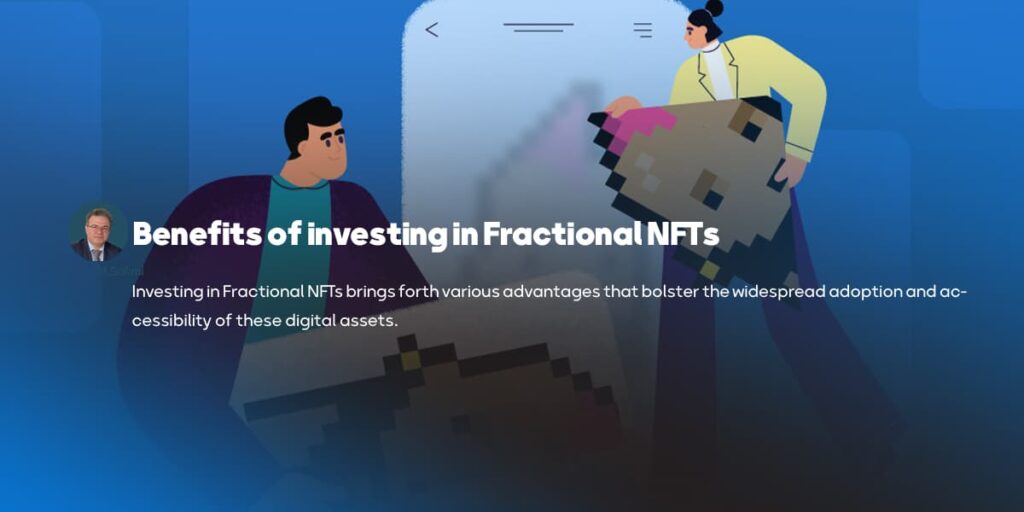
Benefits of investing in Fractional NFTs
Investing in Fractional NFTs brings forth various advantages that bolster the widespread adoption and accessibility of these digital assets. Here are the key benefits of engaging in Fractional NFT investments:
Increased Access and Affordability
Fractionalization empowers individuals with limited resources to own a fraction of high-value NFTs that might have previously been financially unattainable. By splitting ownership into smaller segments, Fractional NFTs facilitate wider participation and investment, democratizing access to exclusive digital assets.
Liquidity and Tradeability
Fractional NFTs can be traded on secondary markets, offering liquidity to owners. Dividing ownership into fractional shares gives investors the freedom to buy, sell, and trade these shares, boosting market activity and liquidity.
Portfolio Diversification
Fractionalization enables investors to diversify their NFT portfolios. Instead of concentrating a substantial amount in a single NFT, fractional ownership allows for spreading investments across multiple assets. This diversification helps mitigate risk and potentially enhances overall portfolio performance.
Collective Ownership and Collaboration
Fractional NFT ownership nurtures a sense of community and collaboration among co-owners. It permits multiple investors to jointly own valuable digital assets, fostering collaboration and shared decision-making regarding the NFT’s future.
Democratization of Ownership
Fractional NFTs democratize the ownership of high-value NFTs by enabling multiple individuals to own a portion of the asset. This inclusivity widens investment opportunities to a more diverse investor base who may not be able to afford the entire NFT, promoting a more inclusive digital art ecosystem.
Investors should exercise caution regarding associated risks and conduct comprehensive research before delving into Fractional NFT investments to make well-informed decisions and leverage the benefits of this investment avenue.
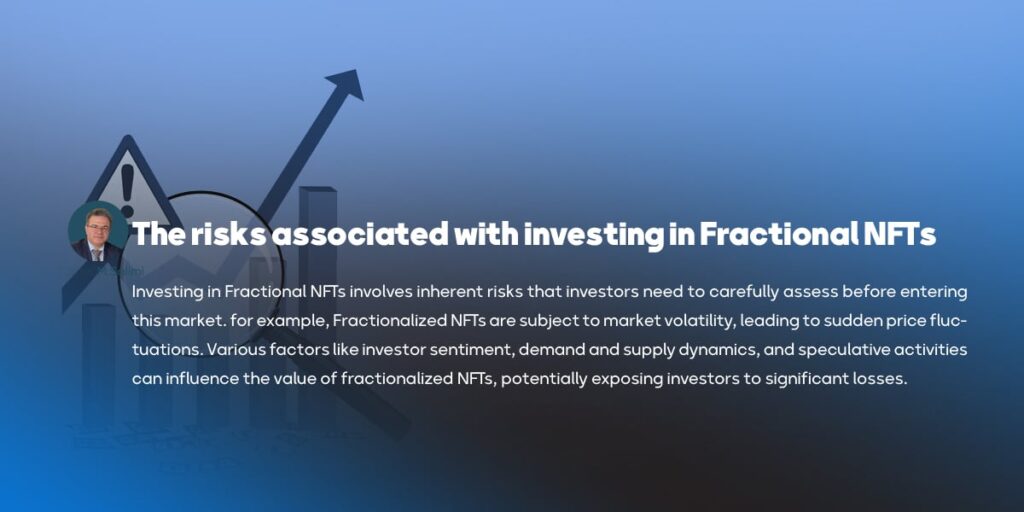
the risks associated with investing in Fractional NFTs
Investing in Fractional NFTs involves inherent risks that investors need to carefully assess before entering this market. for example, Fractionalized NFTs are subject to market volatility, leading to sudden price fluctuations. Various factors like investor sentiment, demand and supply dynamics, and speculative activities can influence the value of fractionalized NFTs, potentially exposing investors to significant losses.

Portfolio Diversification
Fractionalization enables investors to diversify their NFT portfolios. Instead of concentrating a substantial amount in a single NFT, fractional ownership allows for spreading investments across multiple assets. This diversification helps mitigate risk and potentially enhances overall portfolio performance.
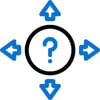
Regulatory Uncertainty
The regulatory landscape governing NFTs and decentralized finance (DeFi) is evolving, leading to uncertainty and potential regulatory revisions. The absence of clear regulations and oversight can introduce legal risks for investors in fractionalized NFTs, possibly resulting in compliance challenges or trading restrictions.

Reconstitution Issues
Ownership of a fraction of an NFT may present reconstitution challenges. Holding a percentage of an asset could restrict the investor’s ability to independently use or sell the asset. Reconstitution mechanisms, such as buyout auctions, can mitigate this issue but introduce complexities to ownership structures.

Illiquidity
Despite offering improved liquidity compared to traditional NFTs, Fractional NFTs may still encounter liquidity challenges in specific scenarios. If there is inadequate demand for a particular fractionalized NFT, selling these fractions could be difficult, leading to potential obstacles in exiting investments and realizing value.
Investors should undertake comprehensive research, comprehend these risks, and evaluate their risk appetite before venturing into Fractional NFT investments. This approach will empower them to make informed decisions and effectively manage potential challenges.
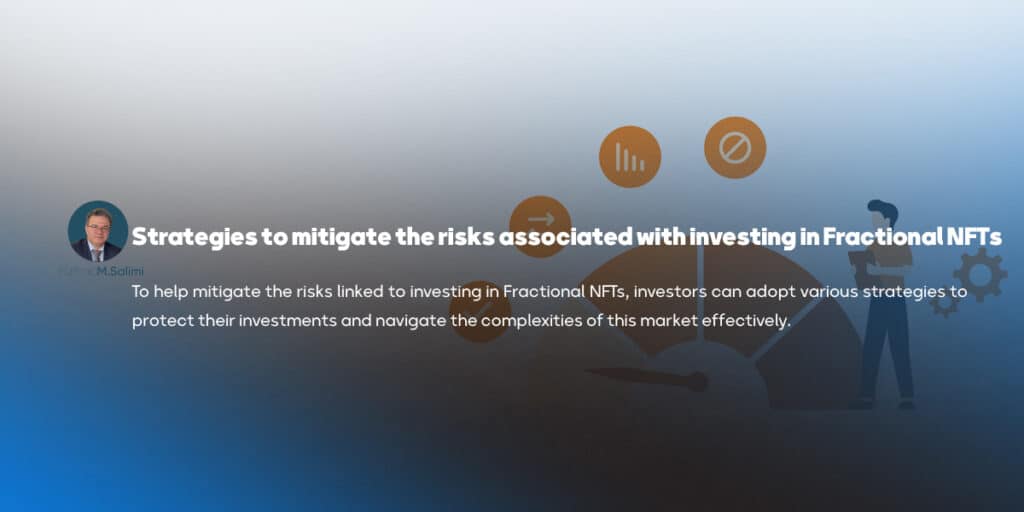
strategies to mitigate the risks associated with investing in Fractional NFTs
To help mitigate the risks linked to investing in Fractional NFTs, investors can adopt various strategies to protect their investments and navigate the complexities of this market effectively. Here are some key strategies to mitigate risks when investing in Fractional NFTs:
Due Diligence and Research:
Conduct comprehensive research on the Fractional NFT project, platform, and the underlying NFT asset before making any investment decisions. Understanding the project’s fundamentals, team, technology, and market dynamics can assist investors in making well-informed decisions and identifying potential risks
Choose Trusted Platforms:
Invest through reputable and secure platforms with a history of successful fractionalization projects. Trusted platforms that offer transparency and robust security measures can lower the risk of fraud, scams, or technical vulnerabilities.
Diversification:
Spread your Fractional NFT investments across various assets and projects to diversify risk. By diversifying your portfolio, you can lessen the impact of potential losses from a single asset and increase the likelihood of benefiting from overall market performance.
Risk Management:
Implement risk management strategies like setting stop-loss orders, defining investment limits, and establishing exit strategies. These tactics can help investors minimize potential losses, manage exposure, and safeguard their capital in volatile market conditions.
Stay Informed About Regulations:
Remain updated on the regulatory landscape concerning NFTs and fractionalization. Understanding regulatory requirements and compliance standards can aid investors in navigating legal risks and ensuring their investments adhere to regulatory guidelines.
Security Measures
Safeguard your investments by using secure wallets, practicing good cybersecurity practices, and verifying the authenticity of the Fractional NFT platform. Protecting your digital assets from hacks, theft, or unauthorized access is essential for securing your investments.
By following these strategies and staying attuned to market developments, investors can effectively mitigate risks associated with Fractional NFT investments, enabling them to make informed decisions in this ever-evolving digital asset landscape.

for buying and selling Fractional NFTs, Fractional art is a leading NFT marketplace enabling users to purchase, sell, and mint fractionalized ownership in high-value NFT artworks. Operates on a decentralized protocol with smart contracts for trading fractional NFTs securely.
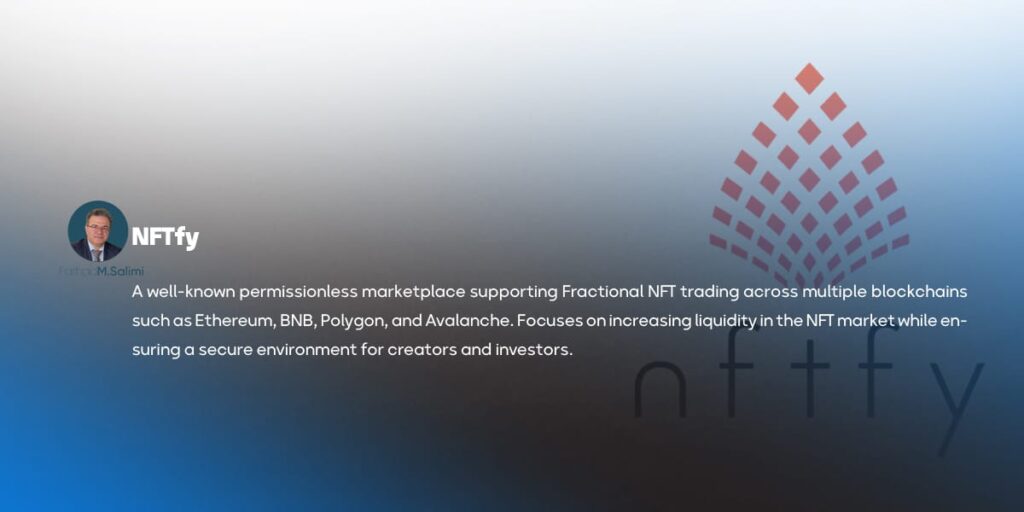
NFTfy
A well-known permissionless marketplace supporting Fractional NFT trading across multiple blockchains such as Ethereum, BNB, Polygon, and Avalanche. Focuses on increasing liquidity in the NFT market while ensuring a secure environment for creators and investors.
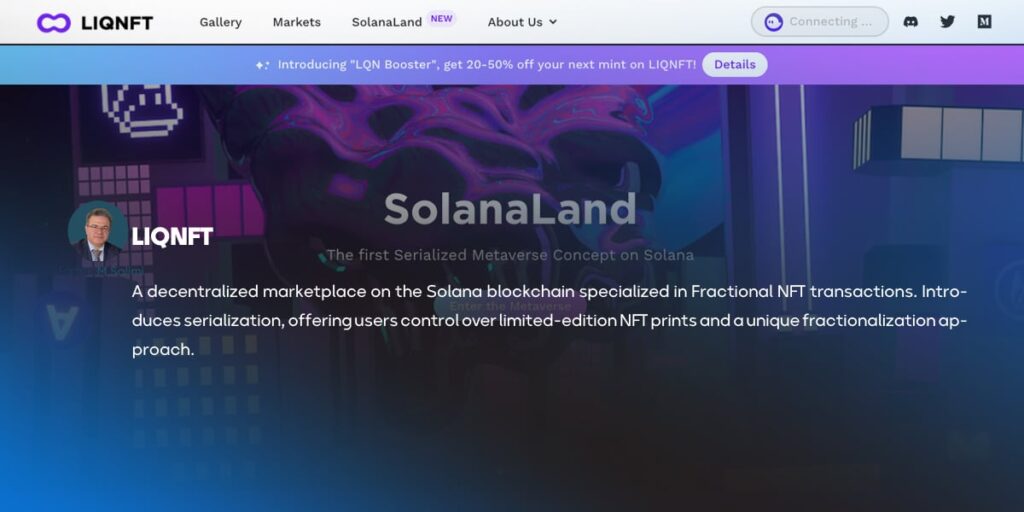
LIQNFT
A decentralized marketplace on the Solana blockchain specialized in Fractionalized NFT transactions. Introduces serialization, offering users control over limited-edition NFT prints and a unique fractionalization approach.
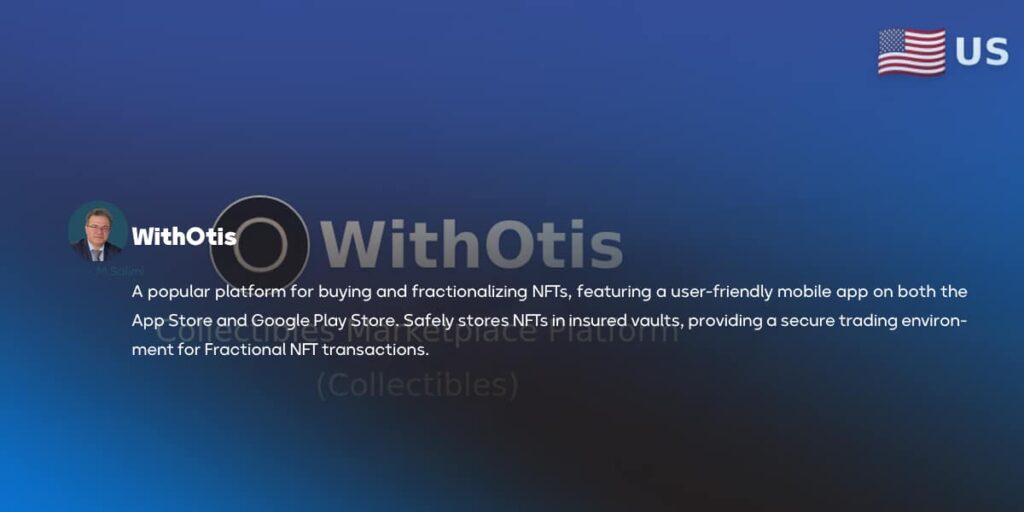
WithOtis
A popular platform for buying and fractionalizing NFTs, featuring a user-friendly mobile app on both the App Store and Google Play Store. Safely stores NFTs in insured vaults, providing a secure trading environment for Fractional NFT transactions.
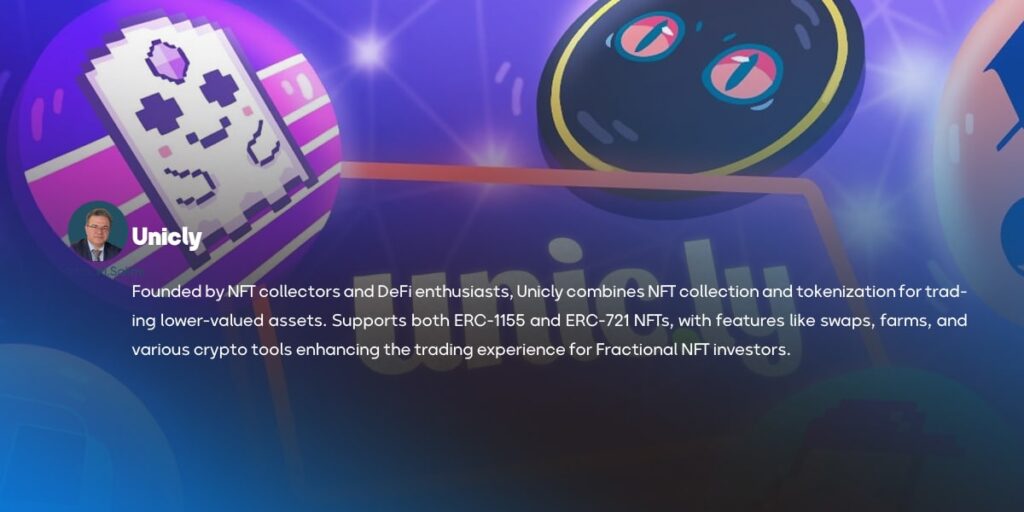
Unicly
Founded by NFT collectors and DeFi enthusiasts, Unicly combines NFT collection and tokenization for trading lower-valued assets. Supports both ERC-1155 and ERC-721 NFTs, with features like swaps, farms, and various crypto tools enhancing the trading experience for Fractional NFT investors.
These platforms offer a variety of opportunities for investors interested in Fractional NFT trading, with features like decentralized protocols, secure vaults, and innovative approaches to fractionalization to meet the dynamic demands of the NFT market.
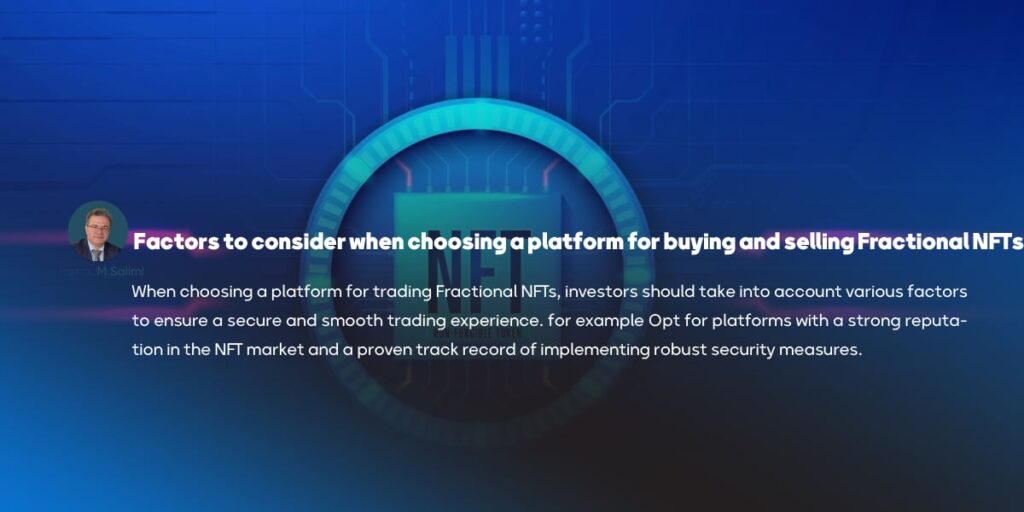
factors to consider when choosing a platform for buying and selling Fractional NFTs
When choosing a platform for trading Fractional NFTs, investors should take into account various factors to ensure a secure and smooth trading experience. for example Opt for platforms with a strong reputation in the NFT market and a proven track record of implementing robust security measures.
It’s crucial to choose a platform that prioritizes user asset protection and data security against cyber threats. Also, Choose a platform that offers ample liquidity for Fractional NFT trading. Platforms with active trading volumes and a diverse range of Fractional NFT assets provide better market access and more opportunities for trading fractions.
User Interface and Experience:
Look for platforms with user-friendly interfaces and intuitive features that simplify navigation, trading, and management of Fractional NFT investments. A well-designed platform enhances the overall user experience and streamlines trading activities.
Regulatory Compliance
Ensure the platform complies with relevant regulations and legal requirements in its operating jurisdiction. Platforms that meet regulatory standards offer a safer and more compliant environment for Fractional NFT transactions.
Transaction Costs and Fees
Consider the transaction costs and fees associated with trading Fractional NFTs on the platform. Evaluate the fee structure, including trading fees, withdrawal fees, and other charges, to understand the overall cost of trading on the platform.
Asset Selection and Diversity:
Evaluate the variety of Fractional NFT assets available on the platform. Seek platforms that offer a broad selection of high-quality NFTs across different categories to provide investors with diverse investment opportunities.
Community and Support:
Assess the platform’s community engagement, customer support services, and responsiveness to user inquiries. A platform with an active community and reliable customer support can offer assistance and guidance when needed.
By taking these factors into consideration when selecting a platform for trading Fractional NFTs, investors can make informed decisions, mitigate risks, and enhance their trading experience in the ever-evolving NFT market.
Final word
In conclusion, Fractional NFTs represent a transformative evolution in the digital asset space, offering investors new avenues for participation and ownership in the burgeoning NFT market. By fractionalizing high-value NFTs, these innovative tokens democratize access, enhance liquidity, and enable diversified portfolios for investors.
The ability to own fractions of coveted digital assets opens doors to a broader audience, fostering collaboration, creativity, and community engagement within the NFT ecosystem. As the landscape of Fractional NFTs continues to evolve, embracing these fractionalized tokens presents an exciting opportunity for investors to explore, engage, and benefit from the dynamic world of digital ownership and creativity.


